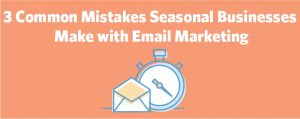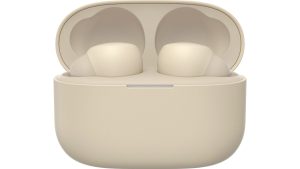There is an art to Facebook ads. With companies of every size running campaigns — from $ 10 a day to $ 1000 a day — the most successful ads are those that stand out from the pack. This article will detail innovative and creative ways to get you started on your next set of Facebook ads. With over two billion active Facebook users, you have the ability to target your audience to any niche you can dream of.
To begin your ad, you must first have a plan for the following questions Facebook will ask you:
- Your objective. In order to choose the right ad objective, Facebook encourages you to answer the question “what’s the most important outcome I want from this ad?” Your goal could be sales on your website, downloads of your app or increased brand awareness.
- Select your audience. This includes the age, demographics, interests and behaviors that best represent your target audience.
- Choose where to run your ad. Options include Facebook, Instagram, Messenger, Audience Network or more. You can also choose to run ads on specific mobile devices.
- Establish your budget. You can enter your daily or lifetime budget and the time period during which you want your ads to run.
- Select the format that best suits your brand. This can be photo, video, stories, messenger or carousel.
Pro tip: It is also a great idea to run multiple types of ads, then use analytics to inform which ads performed the best.
To begin, Sprout Social offers a list of the different elements of a Facebook ad, all of which deserve your time and attention:
- Headline: Describes what your ad is offering.
- Post text: Appears above or below your imagery. It is important to note that this is often the first text a viewer will see.
- Description: Available in only a couple types of ads. This text allows you to go into more depth about your product or offer.
- Media: Image, graphic or video. It is also the largest and most attention-grabbing component.
- Call-to-action: A button that appears near the bottom of your ad that instructs viewers on what to do after viewing your ad. You can select from a variety of options, including “Shop Now,” “Learn More,” etc.
Getting started can be a daunting task, especially if you’re new to creating content for Facebook. To help guide you through the process, here are eight ideas for creating effective Facebooks ads.
Idea Number One: Simplicity Is Effective
Less is more when it comes to Facebook ads. Picture yourself scrolling through your own Facebook feed, and amongst the wordiness, the flashy gaudy ads and lengthy text posts, you see a clean, simple photo of a product that piques your interest. As you linger, you read the description, and end up clicking on the “Learn More” button in order to explore the website’s landing page. Simple branding is an incredibly effective way to catch the attention of a media-inundated audience.
Idea Number Two: Video Facebook Ads
According to WordSteam, “shoppers that view videos are 1.8 times more likely to purchase than non-video viewers.” What’s more, “Views of branded video content on Facebook increased 258% as of June 2017, and over 500 million people watch video on Facebook every day.”
Videos are an engaging and versatile way to convey a lot of information in a short amount of time. The motion of the imagery also makes social media users take pause in order to learn what happens next.
According to Sprout Social, video ads are booming right now; In fact, Sephora created a video ad you can check out here which resulted in a 41% higher click-through rate than their previous ads.
Don’t be intimidated by creating a video; even a simple video produced with minimal editing can go a long way. However, if you are feeling ambitious, Facebook video ads can be up to 240 minutes long. This can be useful if you want to draw customers into a more elaborate story about your business’s origin or the nitty gritty technical aspects of your products.
Whatever form your video takes, make sure to caption your videos. According to Facebook, video ads with captions increase video view time by an average of 12%.
Idea Number Three: Create Ads With Content From Happy Customers
When you use content that showcases customers who are ecstatic about your products and services, it gives credibility to your brand. It also helps your imagery fit in more naturally with the numerous posts of friends and family viewers seen in their feed, making it less likely to be skipped over.
This could take the form of reviews, customer images, referrals, video testimonials, etc.
Another way this can manifest is by naming the number of 5-star reviews. For example, “Over 6,000 people have raved about our new face mask.” You can also choose to simply highlight one review to feature in your Facebook ad. This narrows down the specific qualities your product or service excels in, while also appearing to be peer recommended.
Idea Number Four: Promote A Contest Or Deal With A Facebook Ad
Contests and deals catch people’s eyes because they are time-limited and entice people to learn more. This could be coupons, giveaways or a special time-limited sale at your business. Ensure your call-to-action is clear so that viewers impulsively click to learn more and end up on your website. This is an outstanding way to bring in new customers and encourage existing customers to share your brand with others.
- Increase Facebook fans
- Spread brand awareness
- Acquire email addresses
- Gather user-generated content
- Crowdsource for new product or service ideas
- Increase customer loyalty
- Gain immediate sales
- Announce new products and services or events
- Learn more about existing customers’ preferences
- Increase traffic to website or shop
For more ideas on what types of contests you can select from, check out this article.
Idea Number Five: Create Unique Imagery
A Facebook ad doesn’t have to be just a photo or a video. Your visual component can be a quote, an inspirational value or a graphically designed image. This is a great option to showcase your company’s values, mission or story. Just remember to keep the text to less than 20% of the image’s surface area.
When you are deciding on imagery, Hootsuite recommends using a laser-focused target audience: “Each ad campaign should be designed specifically for niche segments of your target audience, with copy, images, and even placements carefully selected based on that buyer persona.”
Another key factor is to focus on the mobile experience. In the words of Jason Myers, a Social Media Manager at The Content Factory, “Try composing, or at least previewing, your Ad on a mobile device. Most people view Ads on a phone screen which is why those with stark, text-free images and simple messages get more engagement.”
According to Shortstack, the top goals for Facebook ad contests are as follows:
Idea Number Six: Check Out Your Competitor’s Facebook Ad Strategy
Do your research if you need inspiration. There are tons of successful Facebook campaigns, and checking out examples in your field is a great place to get started. Take notes on what works and what doesn’t and adjust your own Facebook ad accordingly. This also gives you a chance to learn how you can stand out; if there is a common theme to the Facebook ads in your industry, you can better identify how to distinguish yourself in your field.
Rebecca White, a Community Manager at TrackMaven, says “Being able to tell what your competitors are promoting on social is invaluable. Comparing our Facebook spend with that of our competitors gives us a level playing field on which to evaluate the impact of our content.”
Idea Number Six: A Text-Only Ad
The right text can go a long way. The best practices for creating a text-only ad are to use a clean, easy-to-read font and to keep it short and sweet. According to Social Proof, the words which perform the best in ads are:
- You
- Free
- Because
- Instantly or now
- New
When creating text-only ads, remember to have a very clear goal in mind and include more detail in the description.
Another pro tip from Social Proof is to create a sense of scarcity by using phrases such as “limited time offer,” “only a few left,” or “this sale ends in one week.”
Wordstream also suggests a short, catchy line. For example, “Consider whether a snappy, memorable tagline (i.e. “Make Work Better”) will work for your ad.”
Idea Number Seven: Create A Carousel ad
A carousel ad is a series of photos in which you can showcase multiple products or services. You can also highlight different features in different images. Facebook carousel ads are popular, as they encourage users to scroll and see more within the ad itself.
According to Sprout Social, “the creative, interactive nature of [a] carousel campaign actually resulted in Pura Vida selling 20x as many unique products.”
Carousel ads allow you to add up to 10 images or videos and have 10 different calls- to-action. This is an excellent choice if you’re an online seller.
Idea Number Eight: Canvas Facebook Ads
Canvas ads are exclusively available on mobile devices. While a more involved process than other forms of ads, they draw a lot of engagement from potential customers. WordStream explains why they are worth considering:
“If you’ve seen demos of Facebook Canvas Ads in action, it’s possible you were interested in the functionality, but turned off by the seemingly time-consuming creation process. Canvas ads are a jumble of videos, still images, text, call-to-actions, and other interactive collateral. Is the time worth the final product?
Statistics say yes.
Check Facebook ad analytics often and determine which ads are performing the best and why.
When done well, Canvas ads can be seriously engaging: 53% of users that open a Canvas ad view at least half of it, and the average view time per ad is an impressive 31 seconds. The reason? The ability to mash together several different ad types (carousel ads, video ads, single image ads, etc.) allows for unmatched storytelling ability—you can really immerse the user in your brand experience.”
To see what this looks like, check out this video.
Don’t Forget Facebook Ad Analytics
The most important asset to your business will be your qualitative analytics. After you decide on the ad that best suits your brand, you want to keep a close eye on analytics to see what is working and what isn’t. Don’t just focus on views and likes. While this is indicative of increased brand awareness and audience engagement, it does not indicate the effectiveness of the Facebook ad itself. For this, you want to focus on conversions, website visits and sales. As you evolve your strategy, you can better and better cater your Facebook ad to the aspects that perform the best with your specific audience.
Digital & Social Articles on Business 2 Community(42)
Report Post




